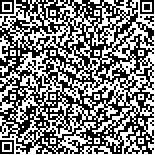| 本文已被:浏览 5356次 下载 3391次 |

码上扫一扫! |
|
|
| 温度对云纹石斑鱼(Epinephelus moara)(♀)×七带石斑鱼(Epinephelus septemfasciatus)(♂)杂交F1胚胎发育和仔鱼活力的影响 |
|
于欢欢1,2, 李炎璐1, 陈 超1, 贾瑞锦1,2, 孔祥迪1,2, 翟介明3
|
|
1.农业部海洋渔业资源可持续利用重点开放实验室 中国水产科学研究院黄海水产研究所 青岛 266071;2.上海海洋大学水产与生命学院 上海 201306;3.莱州明波水产有限公司 烟台 261400
|
|
| 摘要: |
| 用控温仪设定温度组,观察了在不同温度条件下(13℃、15℃、17℃、19℃、21℃、23℃、25℃、27℃、29℃、31℃)云纹石斑鱼(E. moara) (♀)×七带石斑鱼(E. septemfasciatus)(♂)杂交F1的胚胎发育情况,并对实验12 h后的好卵率、12 h后的胚胎发育时期、受精卵的孵化率和初孵仔鱼的畸形率进行了记录;仔鱼孵化出膜后,对其进行了耐饥饿实验,测定其每天的存活率和生存活力指数(Survival activity index,SAI)。实验结果表明,受精卵胚胎发育周期与温度呈正相关的关系,其受精卵孵化的适宜温度范围是17–25℃,温度低于17℃时,孵化率随温度的降低而降低,畸形率反之;温度为13℃时,不能孵化出仔鱼;温度高于25℃时,孵化率随温度的升高而降低,畸形率反之;仔鱼的SAI值随着温度的变化先升高后降低,在温度为17–21℃时,SAI值较高,分别为32.14±2.83、32.30±1.29、22.98±1.42,其他温度条件下SAI值均低于这3组。 |
| 关键词: 云纹石斑鱼 七带石斑鱼 杂交F1 温度 胚胎发育 孵化率 畸形率 SAI |
| DOI:10.11758/yykxjz.20140516 |
| 分类号: |
| 基金项目:科技部国际合作项目(2012DFA30360)和国家科技支撑项目(2011BAD13B01)共同资助 |
|
| The Effects of Temperature on the Embryonic Development and the Larval Activity of F1 Epinephelus moara (♀)×E. septemfasciatus (♂) |
|
|
| Abstract: |
| Temperature plays an important role in fertilized egg hatching and the growth of larvae. The effects of temperature on marine fish at early developmental stages have been reported domestically and internationally. Temperatures above the optimal range may cause stress on the growth and increase the mortality rate and the deformity rate. However, the effects of temperature on embryonic development and the larval activity of F1 Epinephelus moara (♀)×E. septemfasciatus(♂) have been unknown. In this study we recorded the hatching rate, deformity rate and survival activity index (SAI) of the embryo and larvae of F1 E.moara (♀)×E.septemfasciatus(♂) at a series of temperatures (13℃, 15℃, 17℃, 19℃, 21℃, 23℃, 25℃, 27℃, 29℃, and 31℃), and identified the optimal temperature for the seed feeding. The good fertilized egg rate after 12 hours of hatching, the hatching rate and the deformity rate of newly-hatched larvae were also recorded. The SAI and survival rate of newly-hatched larvae were measured by not feeding the larvae till death. The results suggested that there was a positive correlation between the embryonic development of F1 and the temperature. The optimal temperature range for hatching was 17-25℃. When the temperature was above 25℃ or below 17℃, the hatching rate decreased and the deformity rate increased. The SAI of F1 first increased and then decreased along with the change in temperature. In the range of 17-21℃, the SAI showed higher values that were 32.14±2.83, 32.30±1.29, and 22.98±1.42 respectively. In conclusion temperature is a very important factor in the process of seed feeding. The optimal water temperature range may be between 17-21℃ for an improved germination rate and reduced mortality and deformity rates. |
| Key words: Epinephelus moara E. septemfasciatus Crossbreed F1 Temperature Embryonic devel¬opment Hatching and deformity rate SAI |